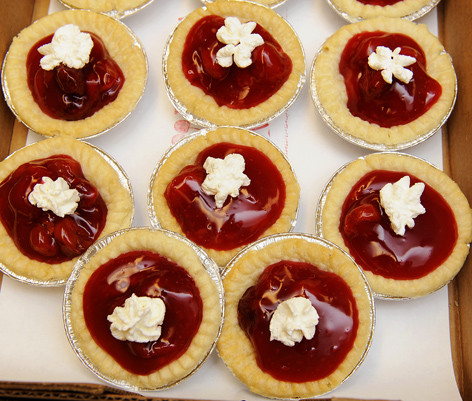
Students decided that special events, such as "Prom Night" held last spring in the Seasons dining center, will be eliminated next year, one of several concessions that's part of their strategy to hold meal plan rates flat. File photo by Bob Elbert.
When it meets in Cedar Falls next week, the State Board of Regents will be asked to approve flat pricing for student meal plans at Iowa State next year. It would be a mistake to assume that means nothing is changing.
As she has done every year, ISU Dining director Nancy Levandowski involved her student clients in a three-month review process last fall that considers questions such as:
- What services do you want to add?
- What services can you live without?
- What price increase is acceptable?
She laid out her projected cost increases, including salaries and benefits, food costs, utilities and repairs, and ideas for facility improvements. Overall -- and with no service changes -- that would have meant just over a 3 percent increase in meal plan prices next year.
"Every year, we do this education with the students and every year they want different things," Levandowski said. "While they were asking for a few new things, this group was very, very committed to getting to zero.
"And it's important that we get to where they want to be. It's their plan," she added.
If approved, the flat rate applies to student meal plans only. Other components of ISU Dining, such as retail cafés, catering and vending, will go up based on market analysis and unavoidable cost increases.
Students decide
And so a fall's worth of meetings and "what if's" came down to a handful of decisions. The leadership of the Inter-Residence Hall Association (IRHA) – the governing body for the holders of 7,000-plus of ISU Dining's 10,000 annual meal plans – opted for:
- Guest meal passes. Beginning in the fall, students with any of the semester meal plans can use up to five meals each semester for guests.
- Additional hours in targeted locations. Two convenience stores will stay open until 2 a.m., and Saturday hours will be added at Clyde's Sports Club.
- If approved by the regents April 26, a 0 percent increase in meal plan prices.
To achieve these, IRHA leaders agreed to give up:
- Special, themed events in the residential dining centers, typically one per semester at each location. Examples have included prom night, Las Vegas night, biker night, circus night, beach night ($90,000 in savings).
- Different daily menus in the Maple-Willow-Larch and Union Drive dining centers. With one menu, food quantities go up and unit costs come down. With the exception of some Buchanan Hall residents, Levandowski said students told her they select a dining center for its location, not its menu that day. The dining center at Oak-Elm, due in part to its proximity to M-W-L, will continue to offer a menu different from the other two ($330,000 in savings).
- Water bottles, purchased by ISU Dining for meal plan students, for to-go beverages from the residential dining centers ($21,000 in savings).
"Can we keep going zero [percent] every year? Most likely not," Levandowski said. "Where do I find money to improve our facilities if I keep having 0 percent increases?"
But, she added, "We'll do this all over again next year. And next year's students may feel differently about this year's decisions."
Savings options that Levandowski outlined and students rejected for 2012-13 included removing the Sunday evening meal at one dining center, closing a dining center weekdays from 2 to 4 p.m. to eliminate "continuous dining," closing cafés at 3 p.m., or cutting back on food upgrades, for example a juice maker, hot cereal or some salad bar items.

